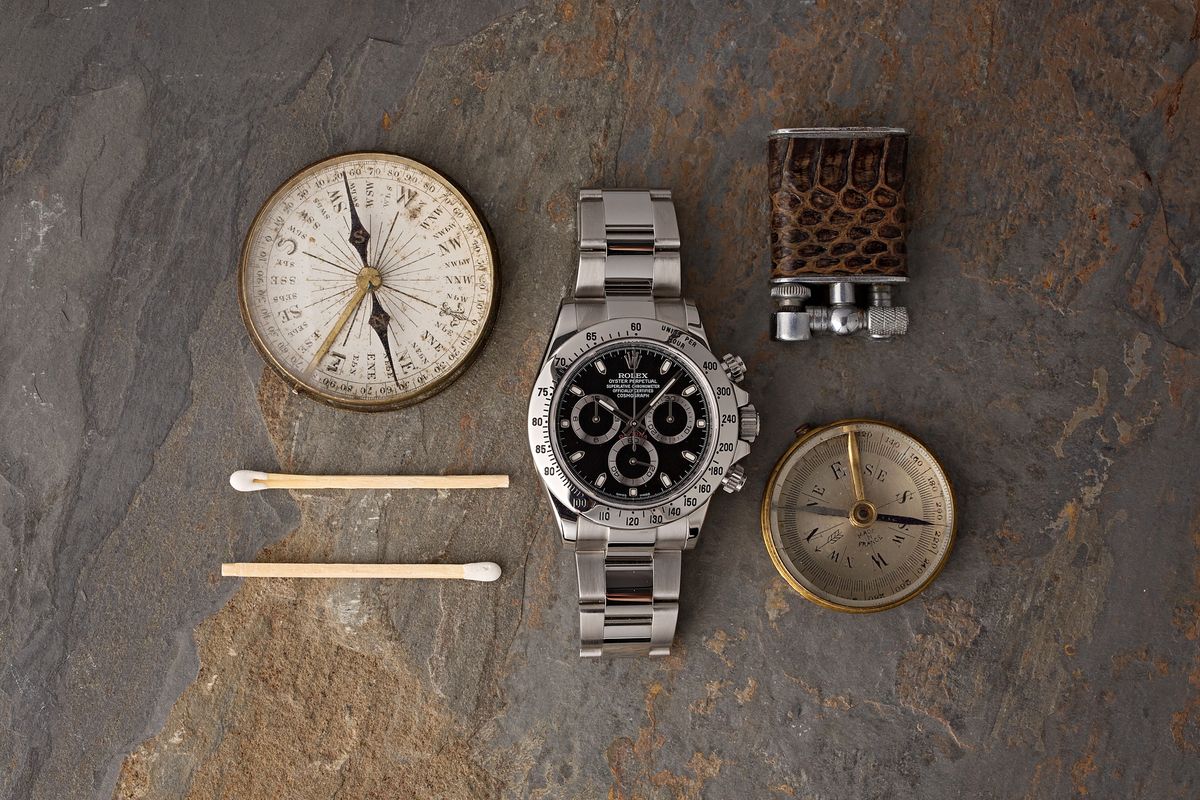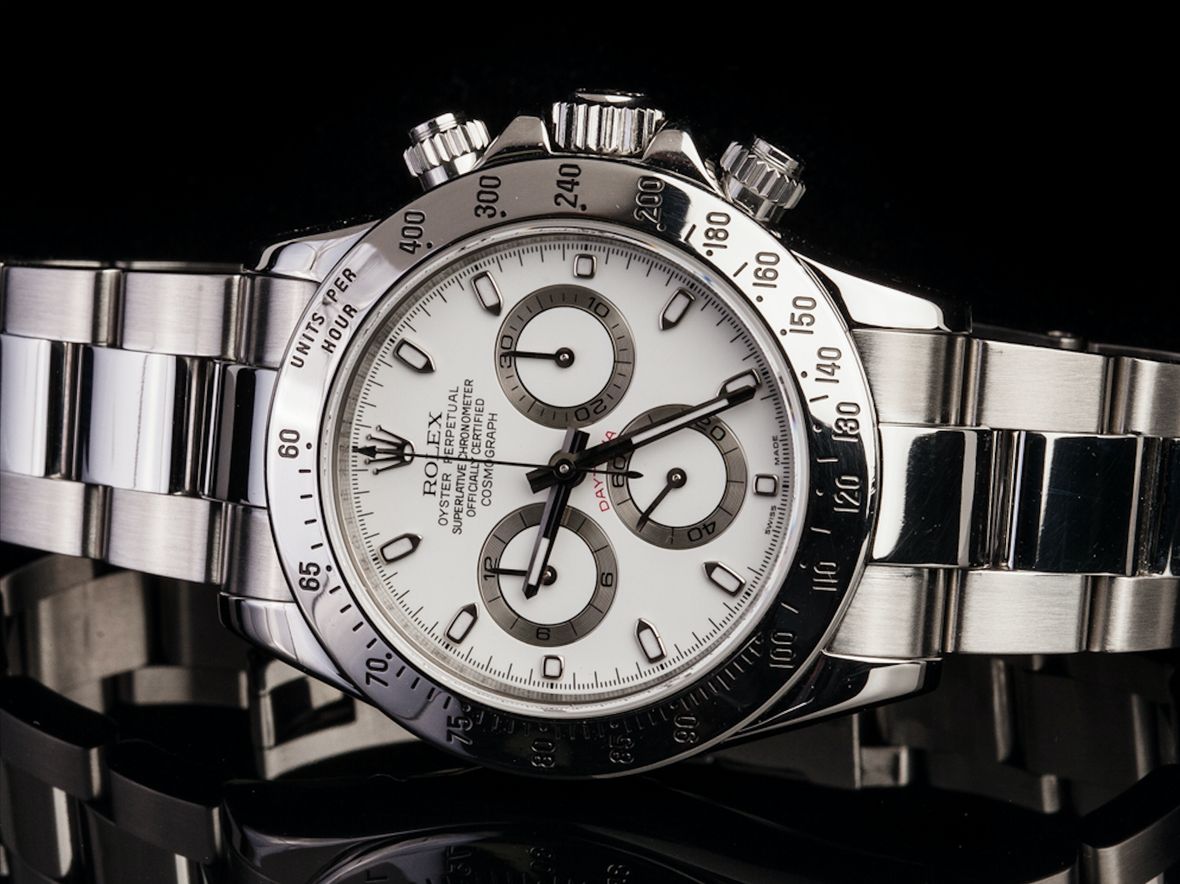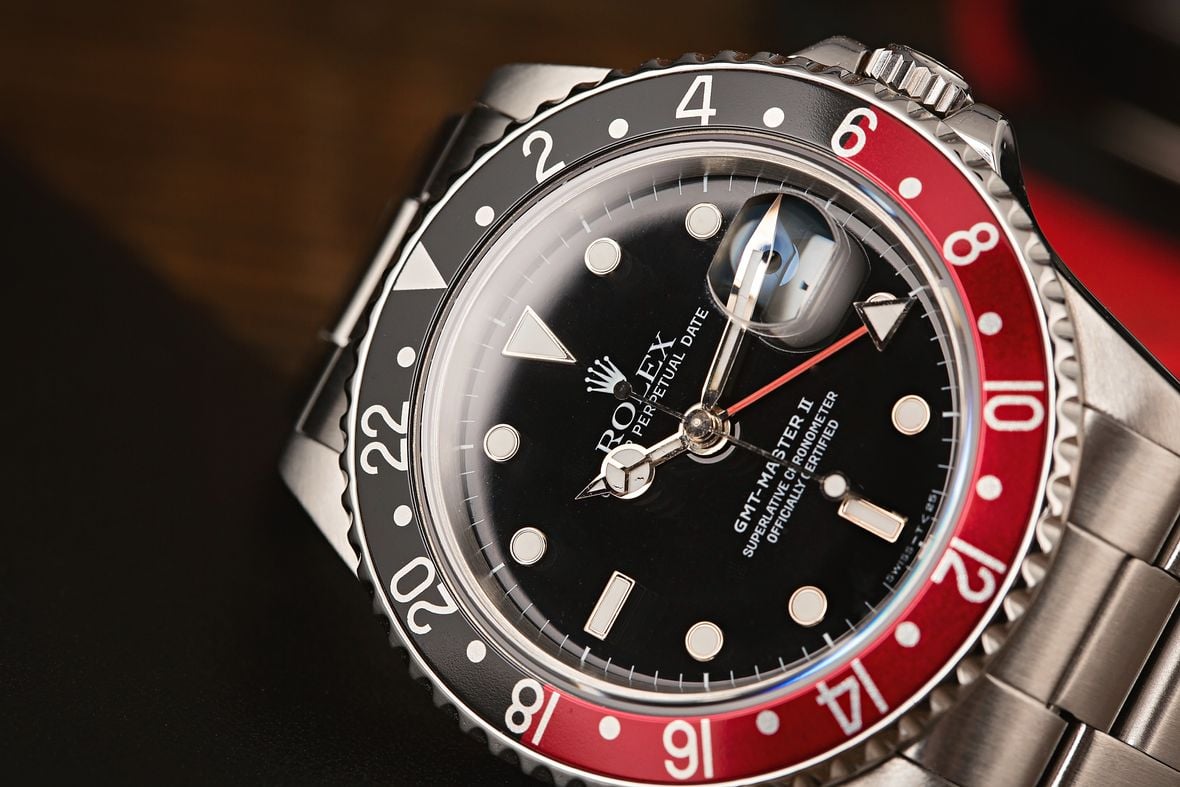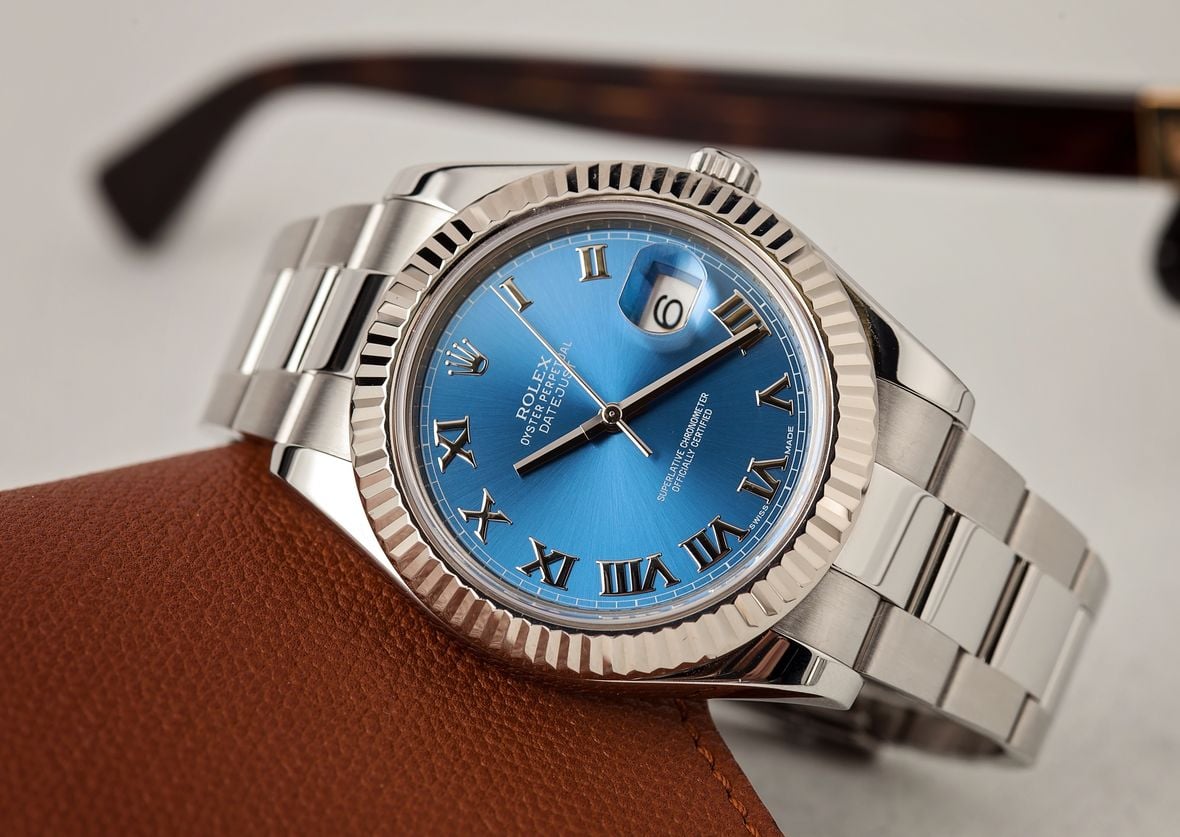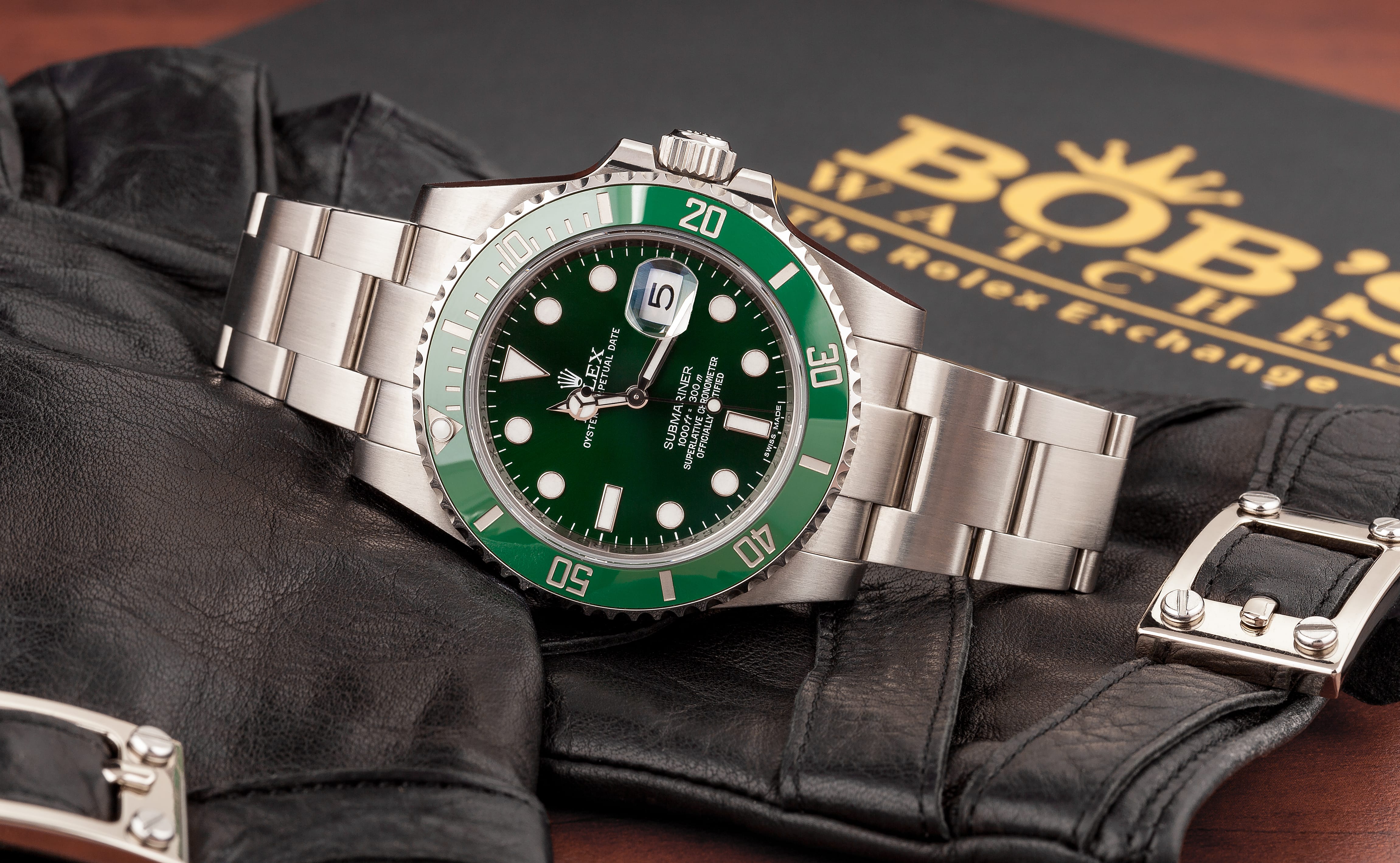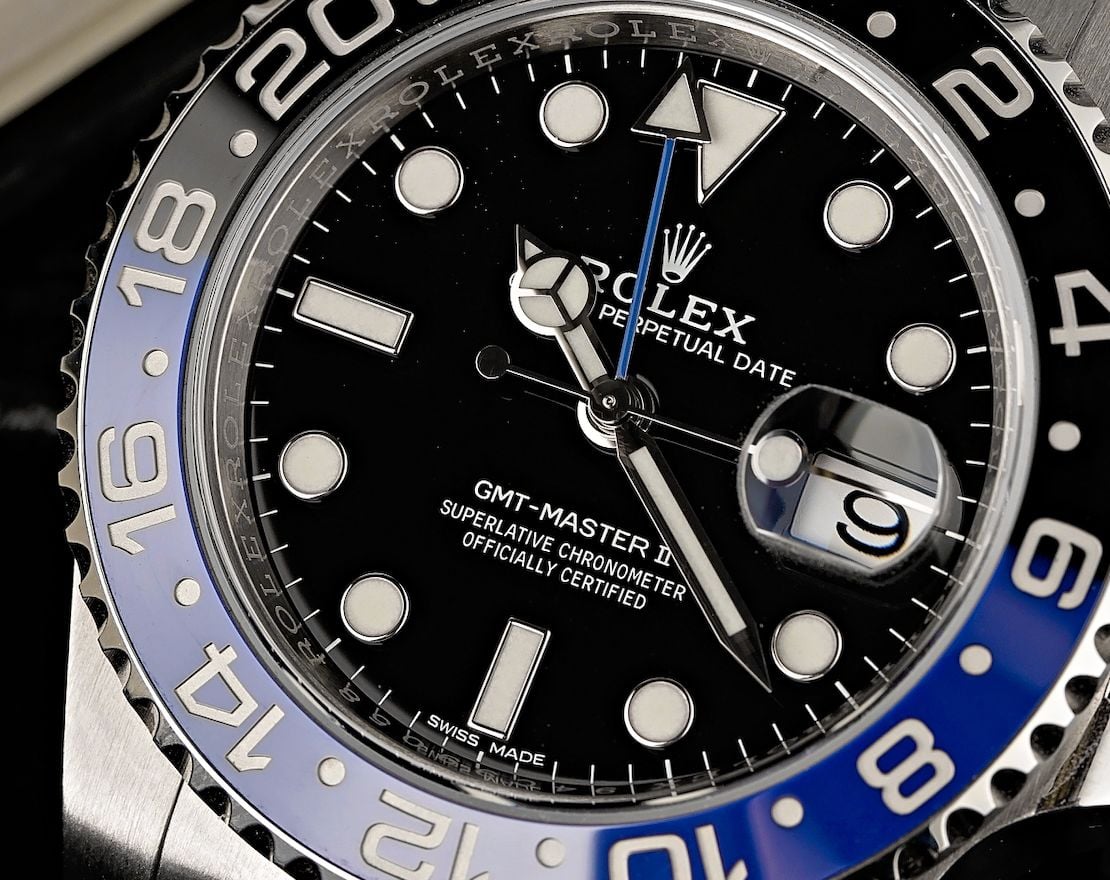Today, the Rolex 116520 Daytona is regarded as one of the world’s most famous watches, and it is a model that has become almost synonymous with the Rolex brand itself. However, for much of the collection’s history, Rolex’s iconic chronograph did not feature an in-house movement. That all changed with the introduction of the reference 116520.
Although it was not all that aesthetically different from the previous generation of stainless steel Rolex Daytona watches, the ref. 116520 represents a major step forward for the collection. No longer in production, yet still offering all the benefits of Rolex’s current in-house chronograph movement, the Rolex Daytona 116520 may just represent the best value for the money among all of the different steel Daytona references.
Rolex Daytona 116520
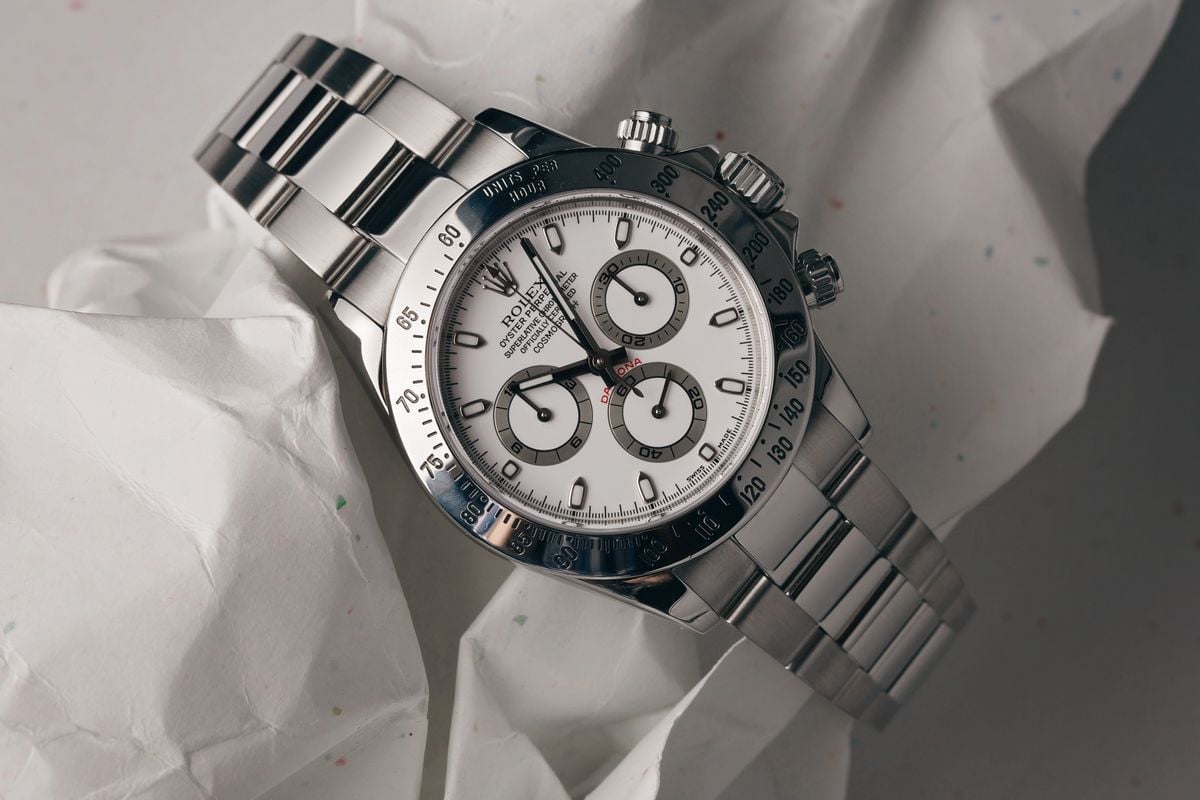
Reference 116520 Key Features:
- Production Years: 2000 to 2016
- Case Diameter: 40mm
- Materials: Stainless steel
- Functions: Time w/ running seconds, 12hr chronograph
- Dial: Black or White w/ luminous hour markers
- Bezel: Fixed, Stainless steel w/ Tachymeter scale
- Crystal: Sapphire
- Movement: Caliber 4130
- Water Resistance: 100 meters / 330 feet
- Bracelet: Oyster Bracelet
A Brief History of the Rolex Daytona
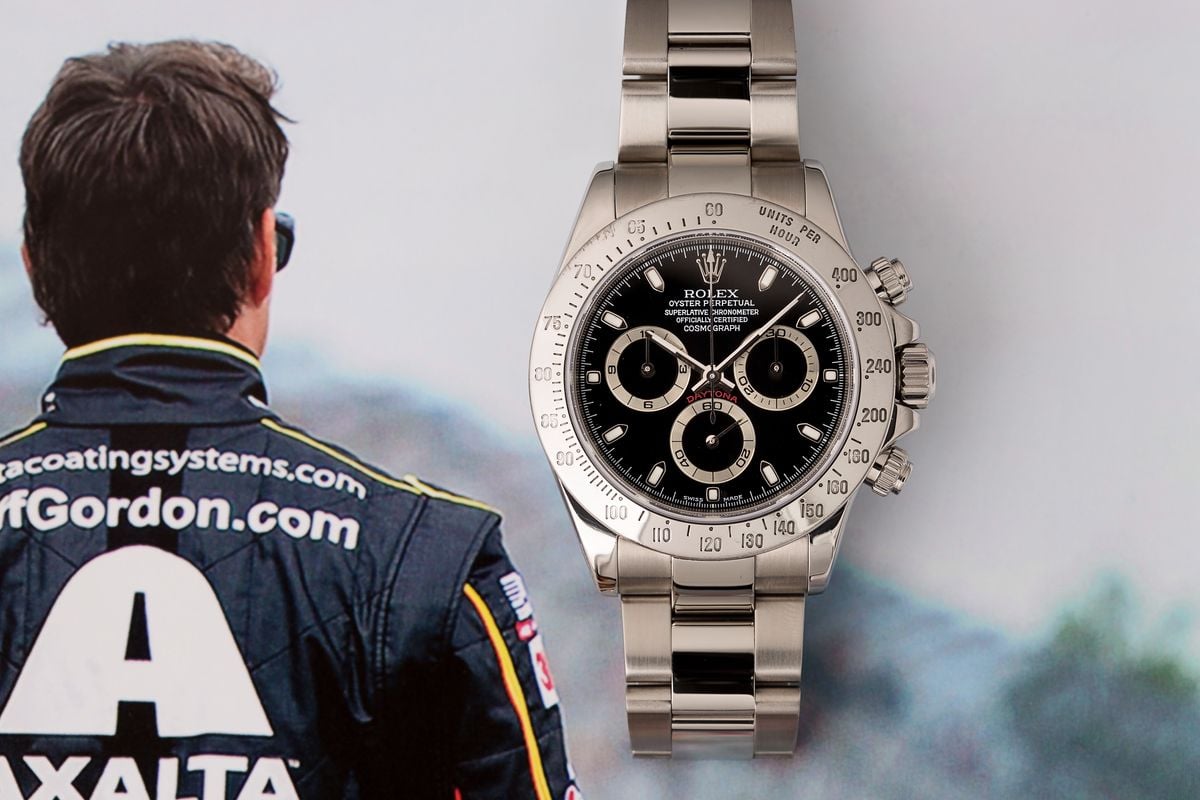
First launched in 1963, the Rolex Daytona is the brand’s line of chronograph watches, inspired by the world of automotive racing. In our Rolex Daytona review, it’s important to note that while the Daytona wasn’t Rolex’s first chronograph wristwatch, it was the first model to feature its tachymeter scale engraved on the bezel rather than printed along the dial’s periphery. Now one of the defining traits of the Rolex Daytona collection, this external tachymeter bezel traces its origins back to the ref. 6239, the very first Daytona introduced in 1963.
Although automatic chronograph movements first appeared in 1969, it was not until 1988 – a full twenty-five years after the introduction of the Daytona – that Rolex’s chronograph collection finally received a self-winding movement. By the 1980s, quartz and even digital watch movements were already well-established, making the Rolex’s Daytona’s manually-wound movement seem especially outdated. Despite finally getting an automatic movement, the first self-winding Daytona was powered by a caliber that was a heavily modified version of the El Primero movement from Zenith.
It would not be until 2000 that the Rolex Daytona would finally receive an in-house movement, making it the last Rolex model to be powered by an off-the-shelf caliber. With that in mind, when Rolex finally introduced its own in-house Caliber 4130 movement for the Daytona, the collection received one of the best mechanical chronograph movements ever created. Reliably powering watches for the last twenty years and still in use today, the Cal. 4130 can be found inside every single modern Rolex Daytona watch.
If you read up on the Rolex Daytona history, you will likely notice that the early years didn’t have much variation. The collection has since expanded to include an increasing number of dial and metal options. Today, it represents one of the brand’s largest and most diverse lines of watches, despite still only being available in a single case size. Although there was a time during the 1970s and 1980s when Rolex Daytona watches lingered on dealers’ shelves, today they rank among the most famous and instantly recognizable luxury timepieces in the entire world.
Rolex Daytona ref. 116500
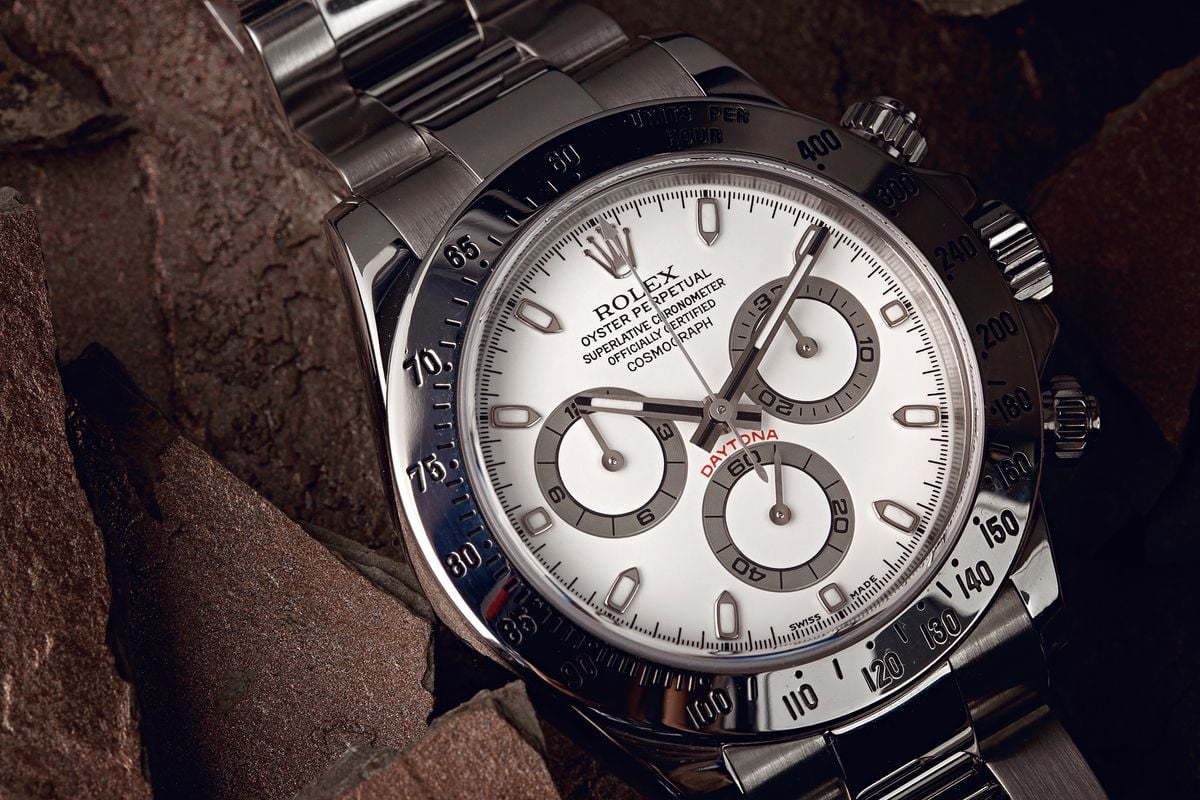
Produced between 2000 and 2016, the reference 116520 appears largely identical to the previous generation. However, along with a new in-house movement, the Rolex Daytona 116520 also benefited from a number of other functional and aesthetic updates.
Daytona 116520 Case
For the most part, the case of the reference 116520 is almost identical to its predecessor. This Rolex Daytona reference is crafted from 904L stainless steel and measures 40mm in diameter (47mm lug-to-lug) with crow-guards offering protection for its Triplock winding crown, the most noticeable update to accompany the Daytona 116520 is the different finishing on the lugs.
While the lugs on the previous generation of Daytona watches featured glossy high-polished sides with satin-brushed top surfaces, the lugs on the reference 116520 receive an entirely high-polished finish. Beyond this, Rolex left the case of the Daytona 116520 largely unchanged, and the watch still featured the same screw-down pushers, sapphire crystal, and solid case-back.
Daytona 116520 Dial
Possibly the greatest visual update to occur with the introduction of the ref. 116520 is in regard to the dial of the watch. While the stainless steel models from both generations were exclusively offered with either black or white dials, there are a number of subtle updates and changes that occurred with the arrival of the Rolex Daytona 116520.
Due to the use of Rolex’s in-house Caliber 4130 movement, the location of the running seconds sub-dial and the 12-hour register swap locations compared to the previous Rolex Daytona with Zenith movement. While the running seconds indicator appears at the 9 o’clock location on the Zenith Daytona, it appears at the 6 o’clock position on the reference 116520.
In addition to the layout of the sub-dials, their placement is also slightly different on the Rolex Daytona 116520. Due to the use of Rolex’s in-house movement, the two registers at the 3 o’clock and 9 o’clock locations are slightly higher on the dial, with the center posts for the hands placed slightly above their corresponding markers, rather than directly in-line with them like on the previous 5-digit series of Daytona watches.
Other updates include the shape of the hour markers and the thickness of the hands. On reference 116520, the hour markers are significantly thicker in their shape and hold more luminous material. Additionally, the hour and minute hand on the Rolex Daytona 116520 are also slightly thicker than those of their predecessor to better match the larger hour markers on the dial.
Daytona 116520 Bezel
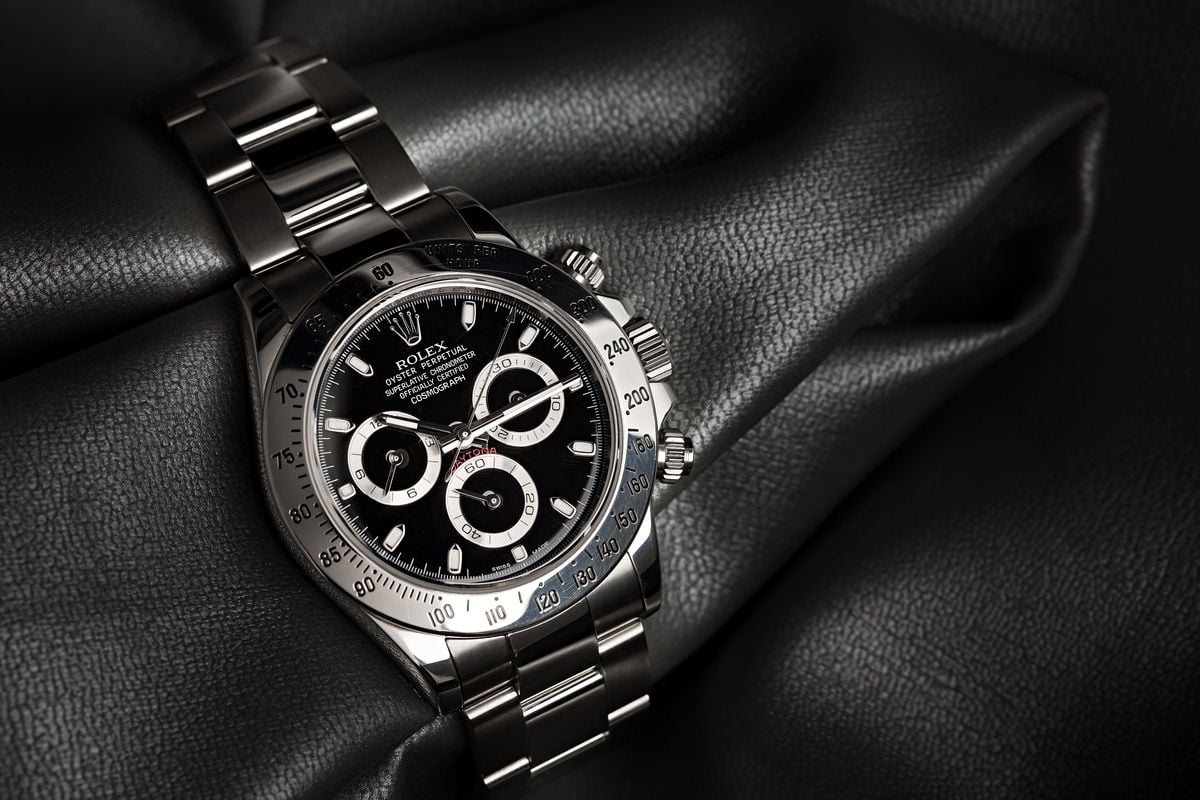
Just like the case of the watch, the bezel on the reference 116520 Rolex Daytona is almost identical to the one on its 5-digit predecessor. Both are crafted from stainless steel and feature an engraved tachymeter scale that is calibrated to 400 units per hour. Additionally, both even feature a similar font; however, when comparing the two side-by-side, it becomes apparent that the printing on the Rolex Daytona 116520 is slightly thicker and bolder than what can be observed on the previous generation of Daytona watches.
Daytona 116520 Movement
Easily the greatest update to accompany the introduction of the reference 116520 Daytona was Rolex’s in-house chronograph movement, the Caliber 4130. Holding claim to being the first Rolex movement to feature the brand’s proprietary Parachrom hairspring, the Caliber 4130 is a 44-jewel integrated chronograph movement that features a column wheel and a vertical clutch for precision start/stop operation and the ability to run the chronograph for extended periods of time without having a negative impact on the precision of the watch.
A key feature of the Rolex Cal. 4130 is that its architecture requires fewer components than standard chronograph movements. This not only improves the overall reliability of the movement, but it also saves space, allowing Rolex to use a larger mainspring to achieve an increased power reserve of 72 hours while promising timekeeping accuracy of -2/+2 seconds per day. While the Caliber 4130 may have first appeared more than two decades ago, it is still considered to be one of the very best mechanical chronograph movements ever created.
Daytona 116520 Bracelet
Another noticeable difference accompanying the Rolex Daytona 116520 is the updated Oyster bracelet fitted to the watch. While you would be hard-pressed to tell one bracelet from the other when looking at them from across the room, up close and especially in-hand, the differences immediately become apparent.
Both the bracelet on the reference 116520 and the one found in the previous generation are stainless steel Oyster bracelets with brushed side links and high-polished center links. However, while the bracelet found on the older 5-digit series features hollow end-links and hollow center links, the bracelet on the Rolex Daytona 116520 features end-links and center-links that are entirely solid.
Beyond the bracelet links themselves, the clasp fitted to the updated Oyster bracelet on the reference 116520 is also significantly different from the clasp of its predecessor. Rather than being a simple fold-over clasp made from stamped metal, the Oysterclasp on the Rolex Daytona 116520 follows a multi-component design of machined parts that offer a more advanced and secure latching mechanism. Additionally, the clasp on the reference 116520 is also fitted with Rolex’s Easylink extension system that allows for tool-free adjustment of the bracelet by 5mm to help compensate for the way that a wrist may swell or shrink throughout the day.
The Last Daytona with a Stainless Steel Bezel
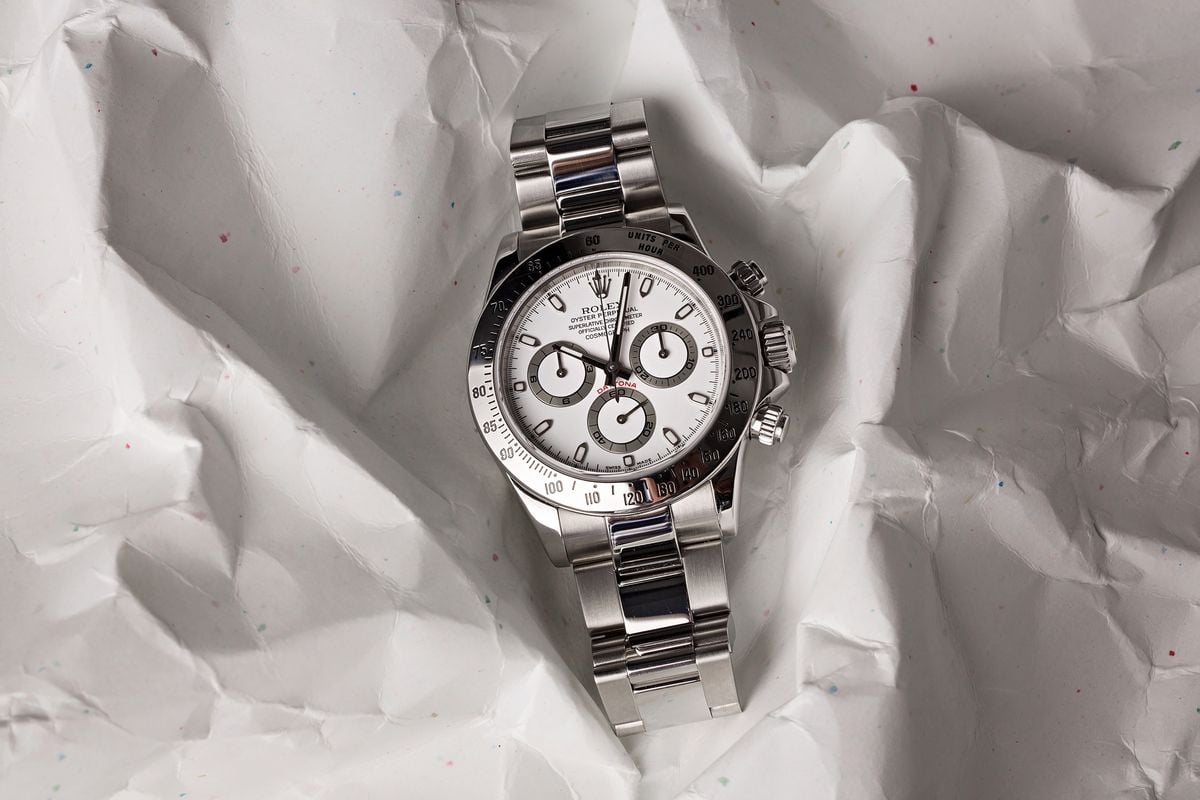
The current-production stainless steel Rolex Daytona is the reference 116500LN. While it is easily one of the hottest and most desirable luxury watches in the world with multi-year waiting lists present at dealers ever since it was first announced in 2016, there is one key detail that separates it from the original design DNA of Rolex’s legendary racing chronograph.
The very first Rolex Daytona featured a stainless steel bezel engraved with a tachymeter scale, and in many ways, a steel tachymeter bezel represents Rolex’s original vision for the watch. Even when Rolex experimented with black acrylic bezels during the first Daytona generation with manually-wound movements, a stainless steel bezel was always still an option within the brand’s catalog. However, ever since the reference 116520 was discontinued in 2016, there has not been a Rolex Daytona with a stainless steel bezel.
While the solid gold and two-tone models are still fitted with metallic bezels rather than Cerachrom (ceramic) ones, these bezels are crafted from solid 18k gold rather than traditional stainless steel. As Rolex continues to fit ceramic bezels to a greater number of its models, the likelihood that a steel bezel Daytona will return to the lineup becomes increasingly thin. While there is no way to predict the future, there is a very good chance that the reference 116520 is the last Rolex Daytona to ever feature a stainless steel tachymeter bezel.
Rolex Daytona 116520 Price and Availability
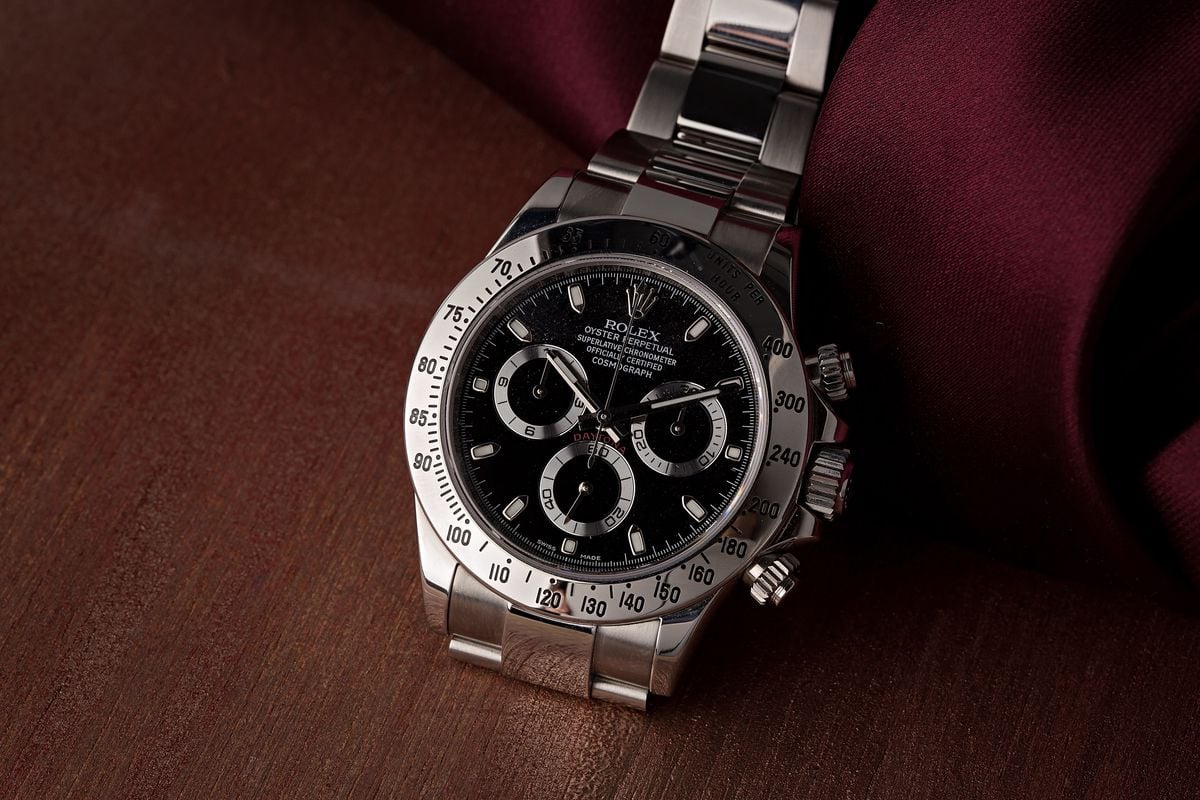
Despite featuring Rolex’s legendary in-house Caliber 4130 movement, the reference 116520 is the least expensive stainless steel Rolex Daytona currently available. Many collectors place a premium on the older Daytona watches with Zenith-based movements due to their important place within Rolex’s history, and as a result of their increasing collectability, it is not uncommon to see older Zenith Daytona watches selling for slightly more than their newer, 6-digit reference number counterparts. However, all collectibility and potential future value aside, the Cal. 4130 in the Rolex Daytona 116520 does offer superior performance metrics, making it a highly attractive option for those in the market for a stainless steel Daytona chronograph.
The price of a reference 116520 can vary depending on a number of factors such as dial color, year of production, and overall condition. With that in mind, as of November 2020, the average price of a Rolex Daytona 116520 typically ranges anywhere between $18,000 and $23,000 on the pre-owned market.
Additionally, it’s also worth noting that the stainless steel ref 116520 trades hands for noticeably higher values than its two-tone steel and gold counterparts. While Rolex Daytona two-tone watches initially cost several thousand dollars more than the Rolex Daytona stainless steel models when purchased at retail, the exact opposite pricing can be observed on the secondary market. Today, due to the extreme interest in stainless steel Rolex sports watches, the two-tone Daytona watches from both the 5-digit and 6-digit generations are the least expensive Daytona models currently available.
Where to Buy the Rolex Daytona 116520
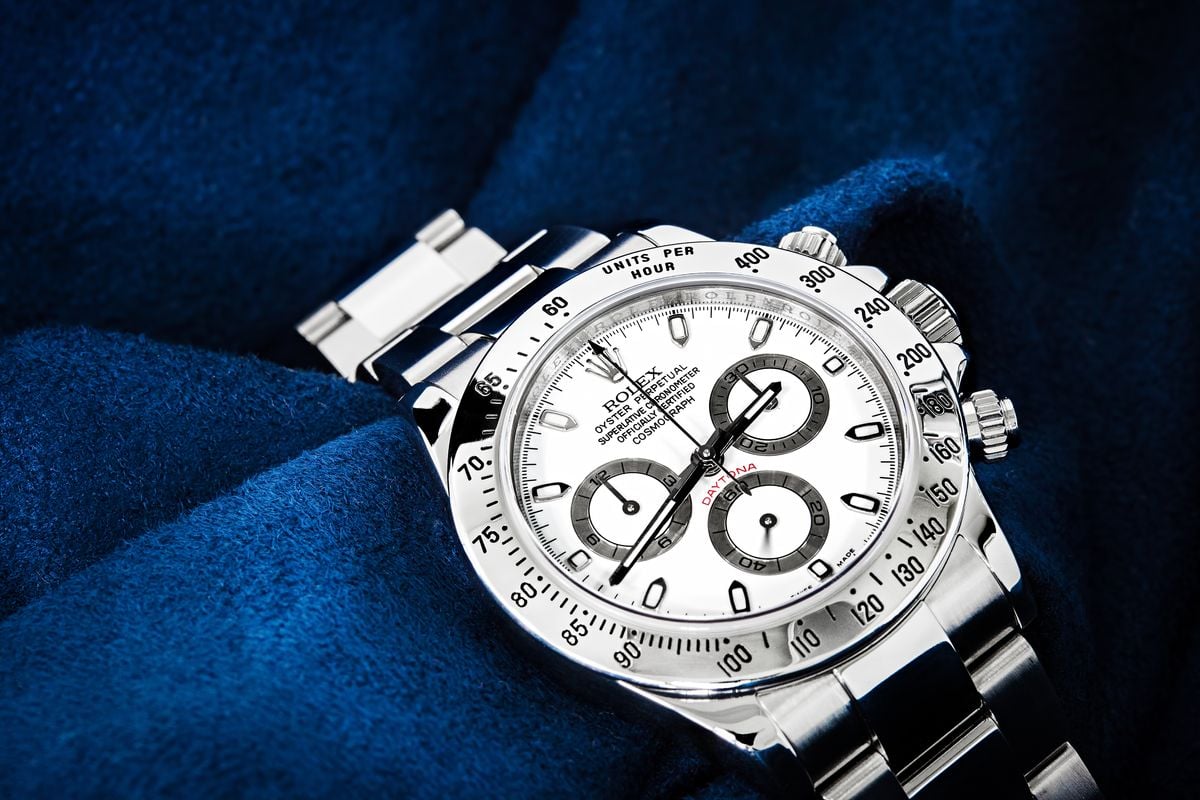
Given that the reference 116520 Rolex Daytona was discontinued back in 2016, the model is no longer available at a retail level, making the secondary market the only place to buy the Rolex Daytona 116520. However, given that virtually every single Rolex retailer around the globe has a waiting list of several years for the current-production stainless steel Daytona, the fact that the reference 116520 is discontinued hardly impacts its overall availability, as technically no stainless steel Daytona watches are immediately available at a retail level.
Additionally, considering that the average open-market price for the current-production Rolex Daytona is about $5k more than the reference 116520 – despite the fact that the two models are powered by the same Caliber 4130 movement. Given its in-house movement and modern bracelet design, the Rolex Daytona 116520 represents especially good value compared to the other stainless steel models currently available.
Lastly, the best part about the Rolex Daytona 116520 is that it is still somewhat relatively easy to find on the pre-owned market. Given that the current stainless steel Daytona has been virtually unavailable at a retail level ever since it was first announced nearly a half-decade ago, there is certainly something to be said for the immediate availability and classic design of the reference 116520.
